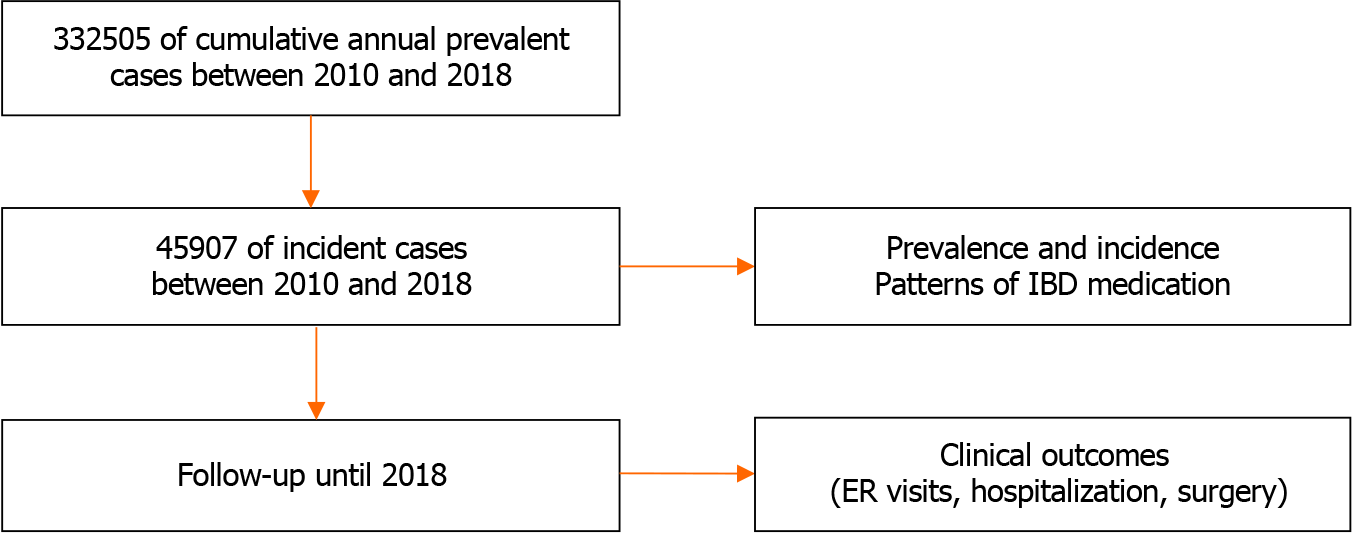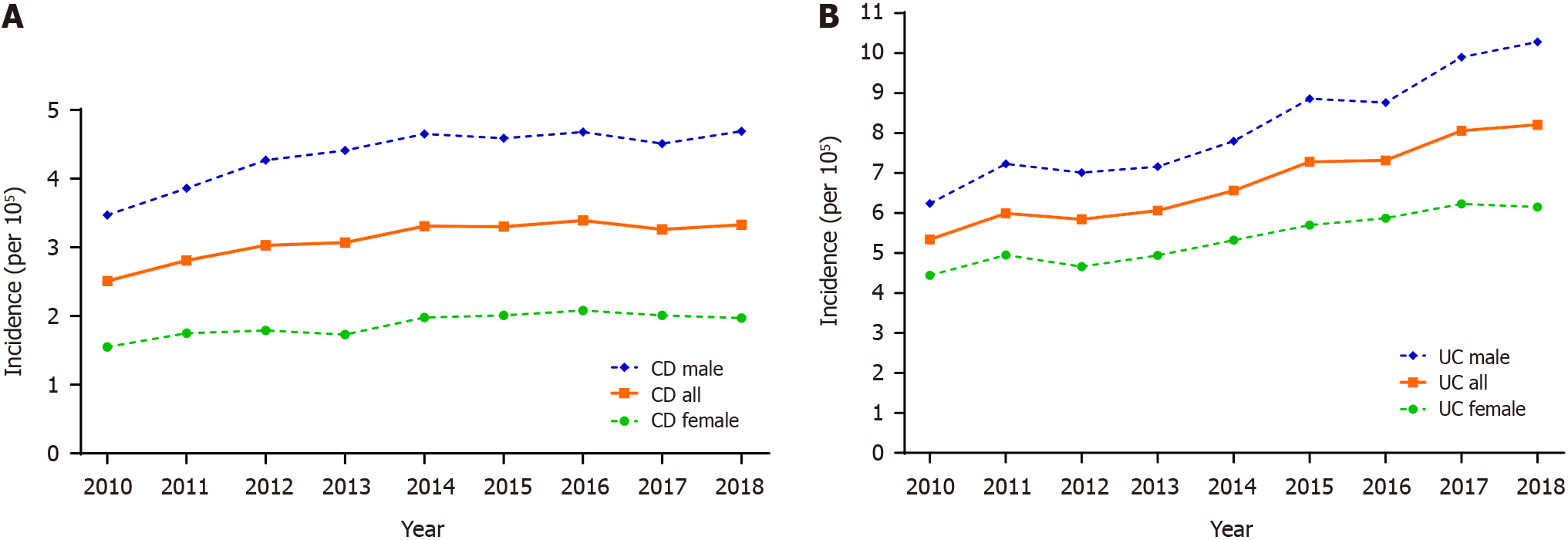Copyright
©The Author(s) 2024.
World J Gastroenterol. Mar 7, 2024; 30(9): 1154-1163
Published online Mar 7, 2024. doi: 10.3748/wjg.v30.i9.1154
Published online Mar 7, 2024. doi: 10.3748/wjg.v30.i9.1154
Figure 1 CONSORT flow diagram illustrating the study process.
IBD: Inflammatory bowel disease; ER: Emergency room.
Figure 2 Incidence of Crohn’s disease and Ulcerative colitis, from 2010 to 2018 in South Korea.
A: Crohn’s disease; B: Ulcerative colitis. UC: Ulcerative colitis; CD: Crohn’s disease.
Figure 3 Age-specific incidence of Crohn’s disease and ulcerative colitis in 2010, 2014, and 2018 in South Korea.
A: Crohn’s disease; B: Ulcerative colitis.
Figure 4 Age- and sex-specific incidence of Crohn’s disease and ulcerative colitis in 2018.
A: Crohn’s disease; B: Ulcerative colitis. UC: Ulcerative colitis; CD: Crohn’s disease.
Figure 5 Temporal trend of medication use in patients with Crohn’s disease and ulcerative colitis, 2010-2018.
A: Ulcerative colitis; B: Crohn’s disease. 5-ASA: 5-aminosalicylates.
Figure 6 Temporal trend of clinical outcomes in patients with Crohn’s disease and ulcerative colitis, from 2010 to 2018.
A: Ulcerative colitis; B: Crohn’s disease. ER: Emergency room.
- Citation: Kim S, Lee HJ, Lee SW, Park S, Koh SJ, Im JP, Kim BG, Han KD, Kim JS. Recent trends in the epidemiology and clinical outcomes of inflammatory bowel disease in South Korea, 2010-2018. World J Gastroenterol 2024; 30(9): 1154-1163
- URL: https://www.wjgnet.com/1007-9327/full/v30/i9/1154.htm
- DOI: https://dx.doi.org/10.3748/wjg.v30.i9.1154


















